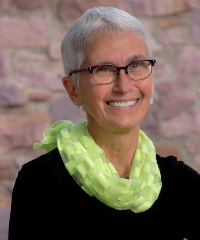Please complete your formal training to unlock the ability to create GLOBE Blogs.
See Training > User Roadmaps in the site navigation to learn more.
Have app, will travel! I am reporting from the field, the campus of the University of Hawaii, Manoa (UHM). I am meeting with citizen scientists here who are collecting data using the GLOBE Observer app. I had the good fortune to meet Dr. Floyd Reed, a professor in the Department of Biology. His lab is involved in modifying strains of Culex mosquitoes so that they are unable to transmit avian...

If you have used the GLOBE Observer Mosquito Habitat Mapper, you know that the app allows you to identify your larva and apply its scientific name. You may have wondered why we use these names? For instance, Aedes aegypti’s common name is the “Yellow Fever Mosquito”. Why don’t we just use the common name when we talk about our work in this project? A unique name, used across many...

We’ve discussed how the mosquito story is a climate story and a human story, looking at climate history and human history. Contemporary climate change is now playing a role in the expansion of vector borne disease- not only in space but also in time. How many days are mosquitoes active in your city? You can find out by using this Disease Danger Day tool:...

Our mosquito story is a climate story. In the Early Holocene around 8200 years ago, the area that is today the Sahara Desert was much wetter and supported grassland vegetation. During the mid-Holocene, about 5000 years ago, changes in the monsoon began to dry out much of north Africa. This caused the Sahara to expand, and the yellow fever mosquito (Aedes aegypti) was forced to retreat to areas...

Welcome Message from Dr. Russanne Low, GLOBE Mission Mosquito Science Lead Welcome to the GLOBE Mission Mosquito Scientists’ Blog. This is the space on the campaign site where student scientists, citizen scientists of all ages, and full-time researchers discuss and explore how changing weather, extreme weather events, land cover modification, insect ecology, and even human behavior...
Showing 116 to 120 of 120 entries.